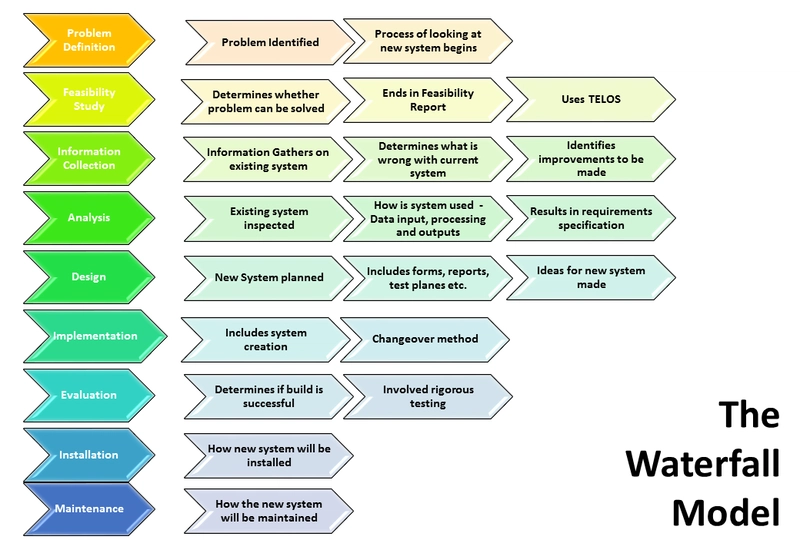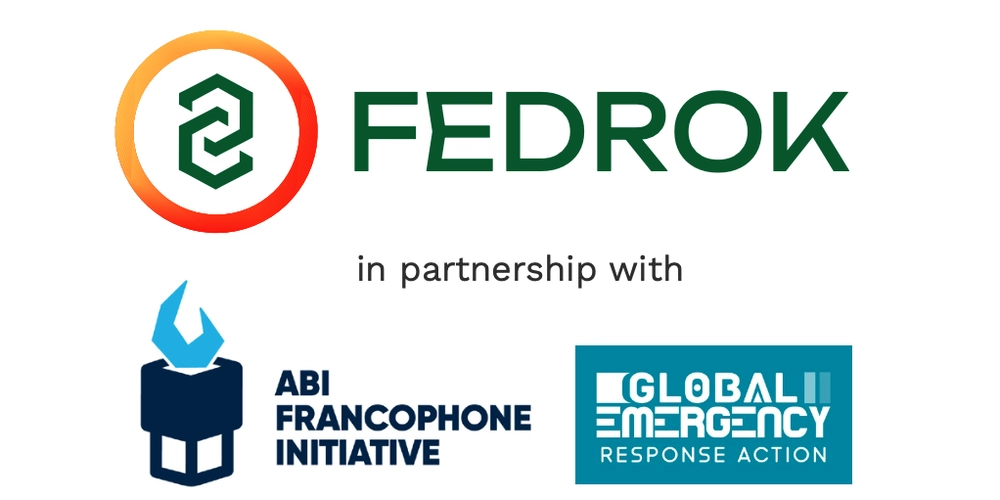Agile, Scrum, Waterfall: What Founders Need to Know
We currently belong to a generation where software is a part of almost everything we do. From the apps we use to wake up in the morning to the tools we rely on at work, or even the manner in which we order food or watch a movie, software is everywhere. However, has it ever crossed your mind as to how all the software is actually built? Remember that every piece of software is a method, a blueprint, a process that helps developers plan, build, test, and improve it. These are known as software development methodologies. They shape how teams work together, how quickly products come to life, and how well they serve your needs. Understanding the software development methodologies is not only for tech experts. Whether you are a business owner, a project manager, or just curious, understanding this concept can offer valuable insights into how software solutions are created. Let us look at the four software development methodologies. Waterfall "The Waterfall Model" photo by Chad250, https://commons.wikimedia.org/wiki/File:The_Waterfall_Model.png Think about following a recipe to bake a cake. You will start gathering ingredients, then mixing, baking, cooling, and finally decorating. You cannot jump ahead, and you certainly cannot go back once the cake is in the oven. This is exactly what the Waterfall methodology is like. It is like a step-by-step, sequential approach where each phase of development must be completed before the next one starts. It was one of the earliest methods used in software development and is still in use today for certain types of projects. The Waterfall model is built on a series of sequential phases that guide a project from start to finish. It begins with requirements gathering, where every detail about the system needs is documented thoroughly. This stage is important because the entire project is shaped by what is defined here. Next comes system design, which involves creating a blueprint for software. Developers and architects take the requirements and translate them into a system design that outlines the structure, components, and interaction with the software. As soon as the design is approved, the implementation phase begins. This is where the actual writing of the code happens, and the system starts to come to life based on the specifications laid out earlier. After coding, the focus shifts to integration and testing. Here, individual modules are combined, and the entire system is tested to ensure that it works as intended. Bugs are identified and resolved during this stage. Once successful testing is completed, the software enters the deployment phase. It is released to users and made operational, either in a full-scale rollout or gradually, depending on the strategy. Finally, comes the main phase, where even after the software has been deployed, ongoing support is essential. This will help in fixing issues, making improvements, and ensuring that software continues to function smoothly with time. Pros of Waterfall Every step is defined and predictable, making this software development methodology clear and straightforward. Waterfall is well-documented, which means future teams can easily understand the system. It is good for projects with fixed requirements, which means it is perfect when nothing is expected to change. Waterfall can be managed easily as the progress can be tracked easily through each phase. Cons of Waterfall Waterfall is not flexible. Going back to make changes is difficult and expensive. Bugs can only be found at the end. Waterfall has a low user involvement, which means that clients may not see the product unless it has been finished. It is slow to adapt to changes, and it doesn’t cope well with feedback. Waterfall is usually ideal for government contracts, infrastructure, projects, or anything where requirements are not going to change. Agile "Agile Project Management by Planbox.png" photo by Planbox, https://commons.wikimedia.org/wiki/File:Agile_Project_Management_by_Planbox.png Consider that you are painting a mural. You will sketch a little, paint a little, receive feedback, and keep adjusting your art as you move forward. This is Agile. The Agile methodology is flexible and a collaborative approach that encourages constant feedback, small progress steps, and the ability to change direction when needed. It was officially introduced in 2001 through the Agile Manifesto. Instead of delivering a huge final product at the end, Agile teams deliver working pieces of software in short and repeatable cycles that are known as iterations or sprints. Core principles of Agile Agile is more than just a method, it is a mindset that values collaboration, flexibility, and customer satisfaction. One of the foundational ideas is customer collaboration. As opposed to isolating clients until the end, Agile involves them throughout the process, ensuring that the final product truly meets their

We currently belong to a generation where software is a part of almost everything we do. From the apps we use to wake up in the morning to the tools we rely on at work, or even the manner in which we order food or watch a movie, software is everywhere. However, has it ever crossed your mind as to how all the software is actually built?
Remember that every piece of software is a method, a blueprint, a process that helps developers plan, build, test, and improve it. These are known as software development methodologies. They shape how teams work together, how quickly products come to life, and how well they serve your needs.
Understanding the software development methodologies is not only for tech experts. Whether you are a business owner, a project manager, or just curious, understanding this concept can offer valuable insights into how software solutions are created. Let us look at the four software development methodologies.
Waterfall

"The Waterfall Model" photo by Chad250, https://commons.wikimedia.org/wiki/File:The_Waterfall_Model.png
Think about following a recipe to bake a cake. You will start gathering ingredients, then mixing, baking, cooling, and finally decorating. You cannot jump ahead, and you certainly cannot go back once the cake is in the oven. This is exactly what the Waterfall methodology is like. It is like a step-by-step, sequential approach where each phase of development must be completed before the next one starts. It was one of the earliest methods used in software development and is still in use today for certain types of projects. The Waterfall model is built on a series of sequential phases that guide a project from start to finish.
- It begins with requirements gathering, where every detail about the system needs is documented thoroughly. This stage is important because the entire project is shaped by what is defined here.
- Next comes system design, which involves creating a blueprint for software. Developers and architects take the requirements and translate them into a system design that outlines the structure, components, and interaction with the software.
- As soon as the design is approved, the implementation phase begins. This is where the actual writing of the code happens, and the system starts to come to life based on the specifications laid out earlier.
- After coding, the focus shifts to integration and testing. Here, individual modules are combined, and the entire system is tested to ensure that it works as intended. Bugs are identified and resolved during this stage.
- Once successful testing is completed, the software enters the deployment phase. It is released to users and made operational, either in a full-scale rollout or gradually, depending on the strategy.
- Finally, comes the main phase, where even after the software has been deployed, ongoing support is essential. This will help in fixing issues, making improvements, and ensuring that software continues to function smoothly with time.
Pros of Waterfall
- Every step is defined and predictable, making this software development methodology clear and straightforward.
- Waterfall is well-documented, which means future teams can easily understand the system.
- It is good for projects with fixed requirements, which means it is perfect when nothing is expected to change.
- Waterfall can be managed easily as the progress can be tracked easily through each phase.
Cons of Waterfall
- Waterfall is not flexible. Going back to make changes is difficult and expensive.
- Bugs can only be found at the end.
- Waterfall has a low user involvement, which means that clients may not see the product unless it has been finished.
- It is slow to adapt to changes, and it doesn’t cope well with feedback.
Waterfall is usually ideal for government contracts, infrastructure, projects, or anything where requirements are not going to change.
Agile

"Agile Project Management by Planbox.png" photo by Planbox, https://commons.wikimedia.org/wiki/File:Agile_Project_Management_by_Planbox.png
Consider that you are painting a mural. You will sketch a little, paint a little, receive feedback, and keep adjusting your art as you move forward. This is Agile. The Agile methodology is flexible and a collaborative approach that encourages constant feedback, small progress steps, and the ability to change direction when needed. It was officially introduced in 2001 through the Agile Manifesto. Instead of delivering a huge final product at the end, Agile teams deliver working pieces of software in short and repeatable cycles that are known as iterations or sprints.
Core principles of Agile
Agile is more than just a method, it is a mindset that values collaboration, flexibility, and customer satisfaction.
- One of the foundational ideas is customer collaboration. As opposed to isolating clients until the end, Agile involves them throughout the process, ensuring that the final product truly meets their requirements.
- Another of the key principles is embracing change. Agile teams understand that changes are inevitable, especially in dynamic industries. So, even if a requirement shifts late in development, Agile allows teams to adopt without spoiling the entire project.
- Frequent delivery is also one of the core principles of Agile. Instead of waiting months for a full product, teams deliver working pieces of software regularly. This allows for faster feedback and ensures the product is on the right track.
- Lastly, Agile thrives on cross-functional teams. Developers, testers, designers, and even business analysts work closely together. This diverse collaboration leads to more holistic solutions and fosters a strong team spirit.
Pros of Agile
- Agile is highly flexible, and changes are welcome at any time.
- The continuous user involvement of Agile reduces the chances of building something that customers do not want.
- The working software is released frequently.
- Testing happens at every stage.
Cons of Agile
- Agile can be unpredictable; it can be harder to estimate time and cost upfront.
- Agile usually requires experienced teams. Self-organization can be tricky for beginners.
- Agile requires intensive collaboration, which means it is not suitable for teams that cannot communicate frequently.
- Agile can only work when clients stay constantly involved.
The Agile methodology is ideal for start-ups, product teams, MVP development, and evolving projects where customers needs change rapidly.
Scrum
While Agile is a philosophy, Scrum is practically a framework that brings Agile to life. Scrum is like a well-coached sports team. Here, everyone knows their position, the game is played in sprints, and there are frequent huddles to talk strategy. Scrum is one of the most widely used Agile frameworks globally. A 2023 study by digital.ai revealed that 87% of Agile teams use Scrum or a hybrid of Scrum. Let us understand the key components of Scrum.
One of the cornerstones of Scrum is the concept of sprints, short, focused time periods, typically, 2 to 4 weeks where teams work on a specific set of tasks or features. This helps in keeping the momentum going and ensures regular delivery. To stay aligned, teams hold daily stand-ups, which are brief check-in meetings to discuss progress, highlights, obstacles, and plan the day's work. These quick touch points boost transparency and accountability.
After each sprint, there is a sprint review. This is a demo session where the team will showcase what they have built to the clients and gather feedback. It ensures that the development is heading in the right direction and keeps everyone in the loop. As the sprint ends, a sprint retrospective is held. This is an internal team meeting when members reflect on what went well and what didn’t. They also understand how they can improve in the next sprint. This promotes continuous learning and team growth.
Roles in Scrum
Scrum clearly defines roles to maintain structure and clarity.
At the heart of the product vision is the product owner, who is responsible for prioritizing tasks in the backlog and making sure that the team is building what matters the most to the customer.
Then, there is the Scrum Master, who acts as a coach and facilitator. The Scrum Master ensures that the process is followed correctly, road blocks are removed, and focus and productivity are maintained.
Finally, the development team consists of cross-functional professionals who do the actual building of the final product. They are self-organizing, meaning they decide how to accomplish their work rather than being directed step-by-step.
Pros of Scrum
- The method is transparent. Regular meetings and reviews keep everyone informed.
- There is a chance for continuous improvement as retrospection promote ongoing process enhancement.
- The frequent reviews allow for the timely incorporation of user input.
Cons of Scrum
- Meetings can feel excessive if they are not being managed well, and they can be time-consuming.
- Teams that are new to Scrum can struggle with the discipline that it has.
- Team maturity is very important. Scrum usually needs a motivated and skilled team to succeed.
Scrum is ideal for product development, SaaS teams, and companies who are building customer-focused digital tools.
Lean Software Development
If Agile is about speed and adaptability, Lean is about efficiency and value. Originating from the principles of Lean manufacturing at Toyota, Lean software development focuses on minimizing waste and maximizing the value of the customer. It is less about following a rigid framework and more about applying a mindset of continuous improvement, respect for people, and smart decision making. In Lean, waste does not mean trash or unused material. It refers to anything that doesn’t directly add value to the customer. That can be excess features, waiting times, or even requirements. Lean works beautifully when paired with Agile or Scrum.
This methodology encourages developers to focus on only what matters. This means eliminating anything that doesn’t directly contribute to the end product's value, whether it is excessive documentation, unnecessary features, or waiting on approvals.
- One of the core beliefs of Lean software development is that delayed decisions are often better decisions. Instead of making big decisions early, Lean teams wait until they have enough data and user feedback to make informed and confident choices. This reduces risk and leads to more relevant solutions.
- Another major focus is on empowering the team. Lean promotes respect for people, allowing developers, designers, and testers to make decisions and continuously improve their work.
- Teams are encouraged to reflect on their processes regularly and tweak them to remove friction and bottlenecks. “Kaizen” is deeply ingrained into the philosophy of Lean. The idea is that even small, incremental changes can add up to a big win over time.
Pros of Lean software Development
- Lean prevents overproduction and reduces wasted time and effort.
- By focusing only on what adds value, the customer's needs remain front and center.
- With continuous testing and a proactive quality mindset, the end product is usually more polished.
- Teams are encouraged to learn and adapt rather than stick to outdated plans.
Cons of Lean software Development
- Lean requires a mindset change across all levels of an organization, which can be a very slow process.
- In an effort to eliminate waste, there is a chance of cutting corners or removing things that may be valuable in the long term.
- Lean assumes that team members can take initiative, make decisions, and self-manage, something not every team is prepared for.
- While Lean works wonderfully in smaller teams, scaling it across large enterprises requires strong leadership and discipline.
This is ideal for projects that prioritize speed, flexibility, and efficiency, particularly start-ups, small teams, or companies looking to innovate fast and iterate often.
Final Thoughts
Each of these methodologies, Waterfall, Agile, Scrum, and Lean offers a unique philosophy and a set of practices for building software. But remember that you can select the software development methodology that will be appropriate for you. If your project has fixed requirements and minimal room for change, Waterfall can be an extremely dependable choice. If you are building something dynamic, that is going to evolve with time, Agile brings flexibility and speed. For a structured and iterative approach with clear team roles, Scrum offers focus and rhythm. If you are looking to trim the fat and deliver high-value features quickly and efficiently, Lean can be your perfect match. It has been observed that many teams also use hybrid approaches, combining the best parts of multiple methods to create something that will suit their specific environment and goals. This is the beauty of modern software development: it is about people, creativity, and collaboration as much as it is about the process and code.











































































































































































![[The AI Show Episode 156]: AI Answers - Data Privacy, AI Roadmaps, Regulated Industries, Selling AI to the C-Suite & Change Management](https://www.marketingaiinstitute.com/hubfs/ep%20156%20cover.png)
![[The AI Show Episode 155]: The New Jobs AI Will Create, Amazon CEO: AI Will Cut Jobs, Your Brain on ChatGPT, Possible OpenAI-Microsoft Breakup & Veo 3 IP Issues](https://www.marketingaiinstitute.com/hubfs/ep%20155%20cover.png)




















































































































![[DEALS] 1min.AI: Lifetime Subscription (82% off) & Other Deals Up To 98% Off – Offers End Soon!](https://www.javacodegeeks.com/wp-content/uploads/2012/12/jcg-logo.jpg)














































































































































_incamerastock_Alamy.jpg?width=1280&auto=webp&quality=80&disable=upscale#)
_Brain_light_Alamy.jpg?width=1280&auto=webp&quality=80&disable=upscale#)






























































































![Nothing Phone (3) has a 50MP ‘periscope’ telephoto lens – here are the first samples [Gallery]](https://i0.wp.com/9to5google.com/wp-content/uploads/sites/4/2025/06/nothing-phone-3-telephoto.jpg?resize=1200%2C628&quality=82&strip=all&ssl=1)

























































































